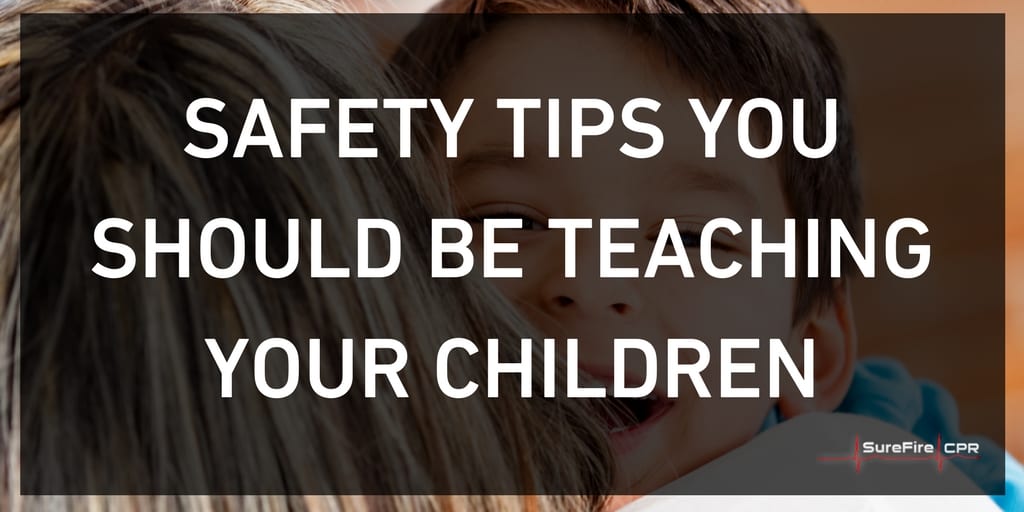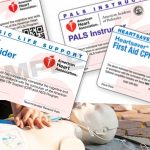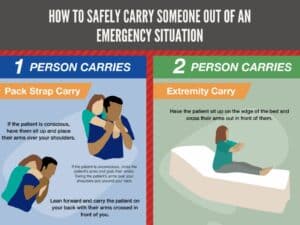For parents, it is never too early to teach kids about safety. If you allocate the necessary time and resources to educate your children about assorted safety issues today, you could help minimize risk down the line.
Now, let’s take a look at five safety tips that every parent should teach his or her children.
-
Know How to Get in Touch with Loved Ones
A lost child should know how to get in touch with a parent. As such, it is a good idea to teach your children how to reach parents, grandparents and other loved ones in emergencies.
Ultimately, a child should know his or her full name, phone number and address at as early an age as possible, according to safety expert Caleb Backe. And the sooner that a parent ingrains this information into a child’s memory, the better.
It is important for parents to teach their kids what information to share in an emergency too, Backe notes. When speaking to a 911 operator or emergency responder, kids should share information about the nature of an emergency, where the emergency is taking place, a call-back number, the number of people affected and their conditions. Children also should try to remain calm, cool and collected and respond to any questions about an emergency as best they can. By doing so, children can get the emergency help they need, precisely when they need it.
-
Teach Your Kids a Code Word to Differentiate Safe and Unsafe Adults
Let’s face it – strangers are one of a parent’s worst nightmares. All strangers are potentially dangerous to kids. And in some instances, a stranger will approach a child under the guise of being sent by a parent in an attempt to take the child away from a playground, school or somewhere else.
Fortunately, Backe offers a simple tip to help kids differentiate safe adults from dangerous ones – teach your children a code word. Because if your kids know that you would only send another adult armed with your code word, they will know not to trust a dangerous stranger who doesn’t know the code word.
-
Execute an Escape Plan to Perfection
Parents should have a plan in place in the event of a fire, flood or other emergencies. This plan should be taught to kids at a young age to ensure they can flawlessly execute it at a moment’s notice.
Firefighter and Executive Director of Keep Kids Fire Safe Foundation, Dayna Hilton, recommends a seven-step process to develop an effective home escape plan:
- With all family members present, craft a home escape map together.
- In your home escape map, illustrate all doors and windows.
- Ask family members to identify at least two ways out of each room of a home.
- Post the escape map on a refrigerator door or other visible areas in a home.
- Ensure all windows and doors are easy to open.
- Practice a home fire drill at least twice a year.
- Share the escape plan with guests who stay in your home.
Family members should practice a home escape plan during the day and at night, Hilton notes. That way, family members will always know how to quickly exit a home in an emergency.
Additionally, parents should provide kids with a central meeting location in case loved ones get separated in an emergency. Parents should identify multiple emergency escape routes as well.
-
Stay Away from Electrical Cords
Electric shock is a major problem for kids, but it often goes unaddressed in homes across the United States. Thankfully, parents can teach their kids to stay away from electrical cords to prevent electric shock.
Placing covers over electric outlets is beneficial, as it helps reduce the risk that kids will jam forks or other objects into the outlets themselves. At the same time, parents should try to keep wires properly insulated and out of reach of children.
Also, parents should teach their kids never to play with electrical cords, light switches or outlets, Electrical Safety Foundation International states. Because if kids know about the dangers associated with electricity, they can protect themselves and others against electric shock.
-
Be Mindful of Your Surroundings
An emergency can happen to any individual, at any location and at any time. Meanwhile, teaching kids to be mindful of their surroundings may make it easier than ever before for children to identify the signs of an emergency before it happens.
As a parent, it is crucial to put your child in the best position to succeed in an emergency. To accomplish this goal, safety expert Bobby F. Kimbrough Jr. recommends parents ask their kids to consider the following question: Do my present surroundings look and feel right? If the answer is “No,” a child should have no hesitation about going to his or her parent or another loved one for help.
Parents should encourage their kids to be mindful of exits any time they visit a new location. If children know where all of a building’s exits are located, they will know where to go to leave a building during an emergency.
Clearly, there’s a lot that parents can do to educate their kids about safety. With the aforementioned tips, parents can help their kids understand a wide range of dangers and plan accordingly.











